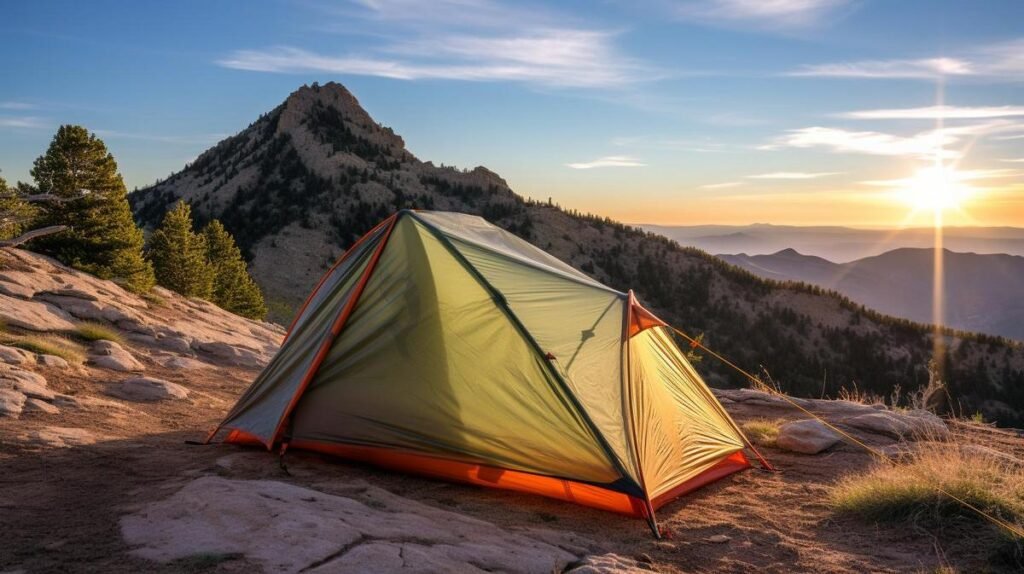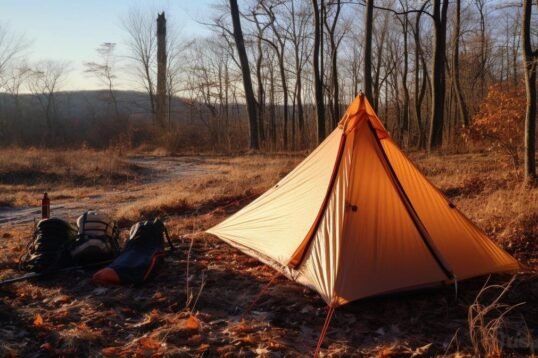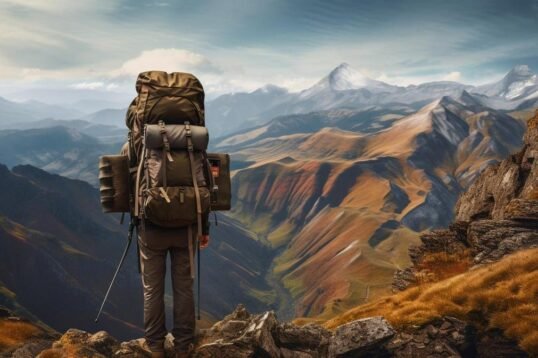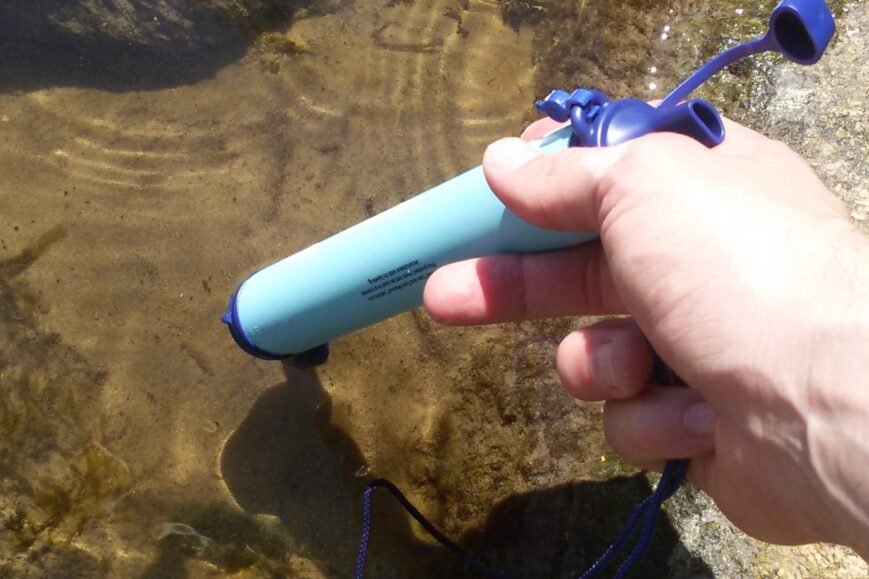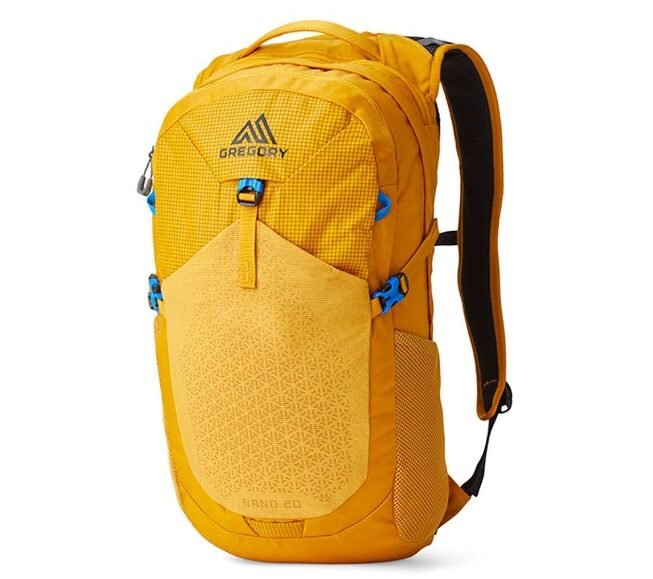- Consider how many people will use the tent and choose capacity accordingly.
- Balance tent weight with durability and weather resistance; ultralight tents under 3 pounds are ideal for solo travelers.
- Opt for synthetic materials like nylon or polyester for strength, waterproofing, and breathability.
- Ensure the tent can handle wind and rain with strong poles, anchor points, and a full-cover rainfly.
- Balancing tent livability with weight; look for enough space, airflow, and storage options without excess bulk.
- Learn to pitch your tent effectively in the backcountry, and practice beforehand.
- Ensure good ventilation to prevent condensation and maintain comfort.
- Look for convenient gear storage options, such as vestibules and internal pockets.
- Safety is enhanced by features like reflective materials, sturdy poles, and reliable zippers.
- Maintain your tent with gentle cleaning, timely repairs, and storing it loosely in a cool, dry place.
- For 4-person tents, consider the extra weight and look for multiple doors and privacy partitions.
- Choose the tent shape (dome, tunnel, geodesic) based on the camping environment; hybrid tent-hammock systems can be versatile.
- Match your individual needs with the right tent by considering the trip type and who you travel with.
Picking the right backpacking tent can make or break your adventure. On the trail, your tent is your home. It’s got to be light, but also tough enough to take on the wild. Will it stand up to wind and rain? Is it easy to set up after a long day of hiking? Let’s figure out what you need to look for in a great tent. Join me at RuggedRoll.com where I’ll walk you through finding the perfect shelter for your next outdoor escape.
What Should I Consider When Choosing a Backpacking Tent?
When looking for a backpacking tent, think about your needs. If you camp alone, you might want the best 1-person lightweight tent. For trips with friends, consider compact tents for solo travel. How many people will sleep in it? That’s what we call choosing backpacking tent capacity.
Weight matters a lot in a tent. You want a balance. If a tent is too heavy, it makes hiking hard. But a light tent may not handle bad weather as well. Look for a tent that feels good to carry and stays strong in wind or rain.
Next, think about when you’ll camp. For summer, you might want a tent that lets air flow. If you like winter trips, pick a heavy tent that can handle snow. Weather resistance is key. A good tent keeps you dry and safe, no matter the weather.
Durability is also important. You want your tent to last. Good materials help here. They make sure you can use the tent for a long time. Always read what other campers say about the tent, too. Their reviews can tell you if the tent will last or not.
Finally, think about money. If you buy a cheap tent, it might not last long. It can cost more in the end if you must buy another. So, sometimes it’s worth it to pay more at first. You get a quality tent that stays with you for many trips.
Remember, a good backpacking tent fits your needs, is easy to carry, lasts long, and feels like a good buy.
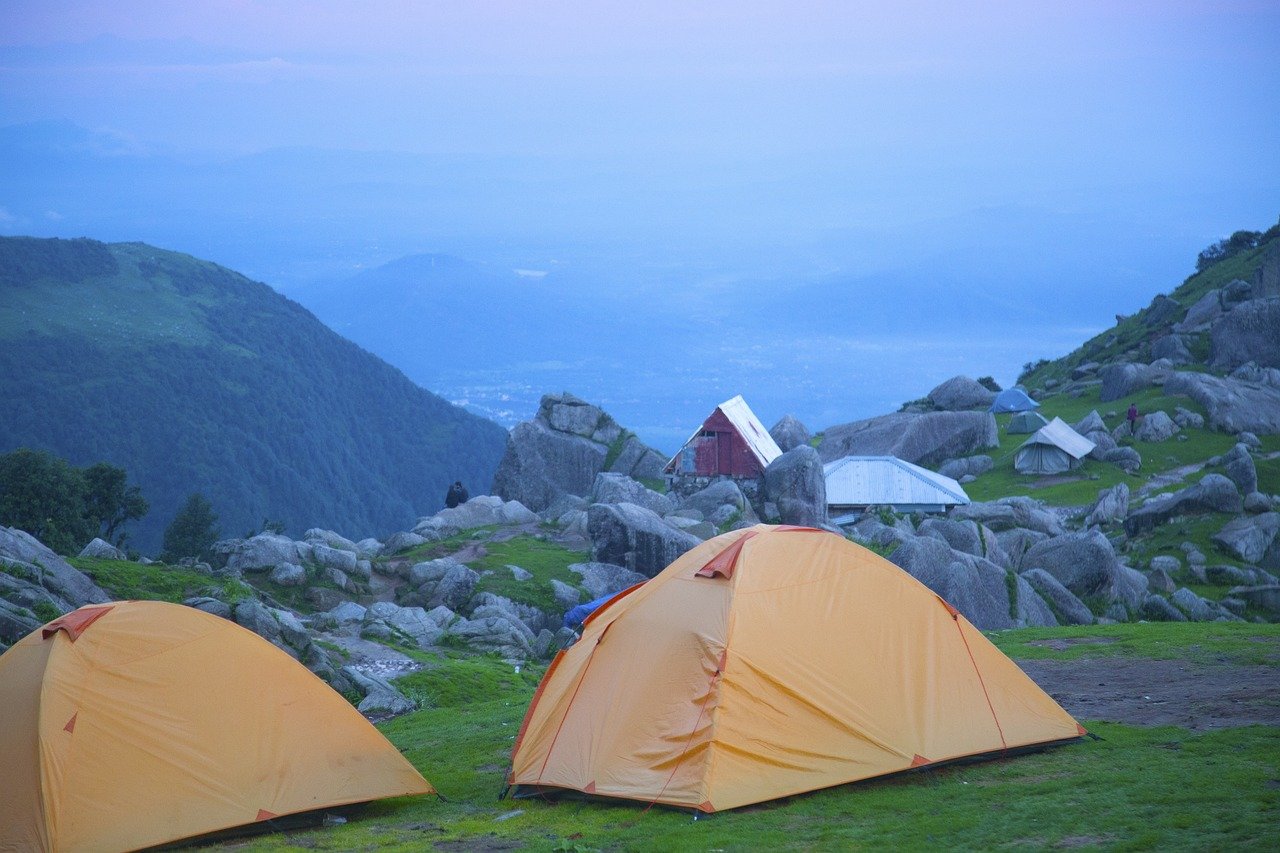
How Light Should My Backpacking Tent Be?
Is 6 pounds too heavy for a backpacking tent? No, especially for a two-person tent. But lighter is often better. Tents are key in the wild. Heavy ones tire you out. Light ones make trekking a joy. Now, what’s ultra-light? Think under 3 pounds for solo tents. Or under 4 pounds for a two-person shelter. This is ultralight. Yet, hard to find and pricey.
For most single backpackers, a tent near 2 pounds is best. Two people? Look for one around 3 to 4 pounds. I know a lightweight tent means less work carrying it. And more fun hiking. But don’t forget, lightweight tents can be less tough. They could tear easier and may not last as long. Sometimes a couple more pounds can mean a lot more tough.
Now, how do you keep your whole pack light? Here’s a tip: check your gear. Only take what you need. Share the load if you hike with pals. And pick gear that does double duty. The lighter your pack, the farther you’ll go and the more you’ll enjoy your adventure.
Remember, the best tent balances weight, space, and sturdiness. Think about your trip too. Will you face wind or rain? Then a bit more weight might mean a lot more safe. Choose smart, not just light.
What Are the Best Materials for Backpacking Tents?
When picking a tent, materials count. You want durable camping gear that lasts. The common materials in backpacking tents are nylon and polyester. Both are synthetic and strong.
Which is better, synthetic or natural fibers? Synthetic fibers, by far, as they resist water and last longer. Waterproof tent technology relies heavily on these materials. Nylon and polyester can get a waterproof coating to keep you dry.
What about waterproof ratings? They tell you how much water the fabric can take before it leaks. A higher number means better waterproofing.
Breathability is also key. You don’t want your tent turning into a sauna. Breathable fabrics for camping tents let water vapor out but stop the rain from getting in. This keeps the inside dry and comfy.
Durability is important too. A tent has to stand up to the wind, and rain, and be packed and unpacked. Durable camping gear means a longer lifespan for your tent.
To sum it up, choose a tent made with synthetic fibers like nylon or polyester for their strength, waterproofing, and breathability. They’ll make sure your camping shelter is cozy, and dry, and can go many miles with you.
Can My Tent Withstand High Winds and Rain?
Wind and rain test all seasonal tents for backpacking. Yes, a well-designed tent can handle these challenges. You need strong poles and a shape that can cut the wind. A dome is one good choice. It holds up better than a tall and narrow tent. Tent stability is key when harsh weather hits. Look for tents with more anchor points. They stay put better in high winds.
A full-cover rainfly is a must for camping in rainfall. It stops rain from getting into your tent. So you stay dry. Seam sealing is also important. It stops water from leaking in through the stitches. Waterproof treatments keep the fabric from soaking up water. You want waterproof backpacking tents for any wet trips.
A heavy tent is often stronger. But a 4-pound tent is not too heavy for backpacking. It just depends on how much you can carry and for how far. Some high-wind tents for mountaineering may weigh more. They have extra features for safety. When picking your tent, think about where you will camp. A light tent works for calm weather. A sturdy one is better for rough spots.
Every trip is different. Always pick the right tent for your place and plan. This will keep you safe and comfy no matter the weather.
Why Is Tent Livability Important in Backpacking?
“Is a 3-person tent too big for backpacking?” The answer depends on your needs. For most, optimal tent space and weight matter. A tent with enough room can make backpacking more pleasant. But it must still be light to carry. Three-person tents strike a balance. They offer space yet remain manageable.
Tent livability means comfort. It’s the blend of space versus weight. You’ll want enough headroom and floor dimensions. These let you move and sleep with ease. Many three-person lightweight tents provide this. They are good for two people plus gear. Or for three close friends.
Good airflow matters too. It keeps the inside air fresh and prevents wet walls. Look for tents with smart vent placement. Also, seek ones with mesh panels for air but bug protection. These can keep your tent dry and pleasant.
What about your gear? Vests, packs, and lofts in the tent keep items tucked away. They prevent clutter. Your sleep spot stays clear. Your gear stays dry.
So, when choosing, think about how you’ll live in it. Headroom, length, and extras count. They turn a tent from a sleep spot into a cozy home outside.

How do I Effectively Pitch My Tent in the Backcountry?
First, pick a flat spot away from hills and water. Then you can start setting up your hiking tent. Lay out all the parts and check that you have everything you need. If your tent is freestanding, you can put it together just about anywhere. With these tents, you piece together the frame and attach the tent body. Stake it down once it stands.
For tents that are not freestanding, you need to stake out the corners first. Then, insert the poles and raise the tent. Sometimes it helps to have color-coded tent setup aids to speed things up. No matter which kind you have, read the guide first. This will make pitching a tent in the backcountry easier. Make sure to pull each corner tight. A secure tent will give you good sleep even when the wind blows.
Some tips can help you set up quickly. If you can, practice at home before you go out. This way, you know how to put up your tent without fuss. Remember to pack extra stakes and a repair kit. This way, you’re ready if something breaks. When you head into the wild, you want to trust your gear. A tent that pops up without trouble means more time for fun. Enjoy the stars at night and wake up fresh for a new day of adventure.
What Should I Know About Tent Ventilation and Condensation?
Ventilation helps keep air fresh inside your tent. It stops condensation too. This is water that collects on your tent walls and can make things wet. Good tents have ways to stop this.
How do tent ventilation systems work? They use mesh panels and openings. These let air move in and out. Mesh panels also block bugs. They are key for a good night’s sleep in the wild.
Breathable fabrics for camping tents let moisture out. They also stop rain from getting in. Look for a 2-person tent with good ventilation. It makes camping cozy, not clammy.
Why are mesh panels so important? They let air in but keep small pests out. This means you can breathe easily and not worry about bugs.
What can you do to handle condensation? Here are some tips. Open vents or doors a bit at night. This lets air flow. If your tent feels damp, wipe the inside with a cloth.
For better airflow, try these strategies. Pitch your tent so the wind blows through it. Use all vents and open them wide. Choose tents with lots of mesh and openings.
When you shop for a tent, think about this stuff. Find one that balances airflow with staying warm and dry. A tent that breathes well makes camping so much better.
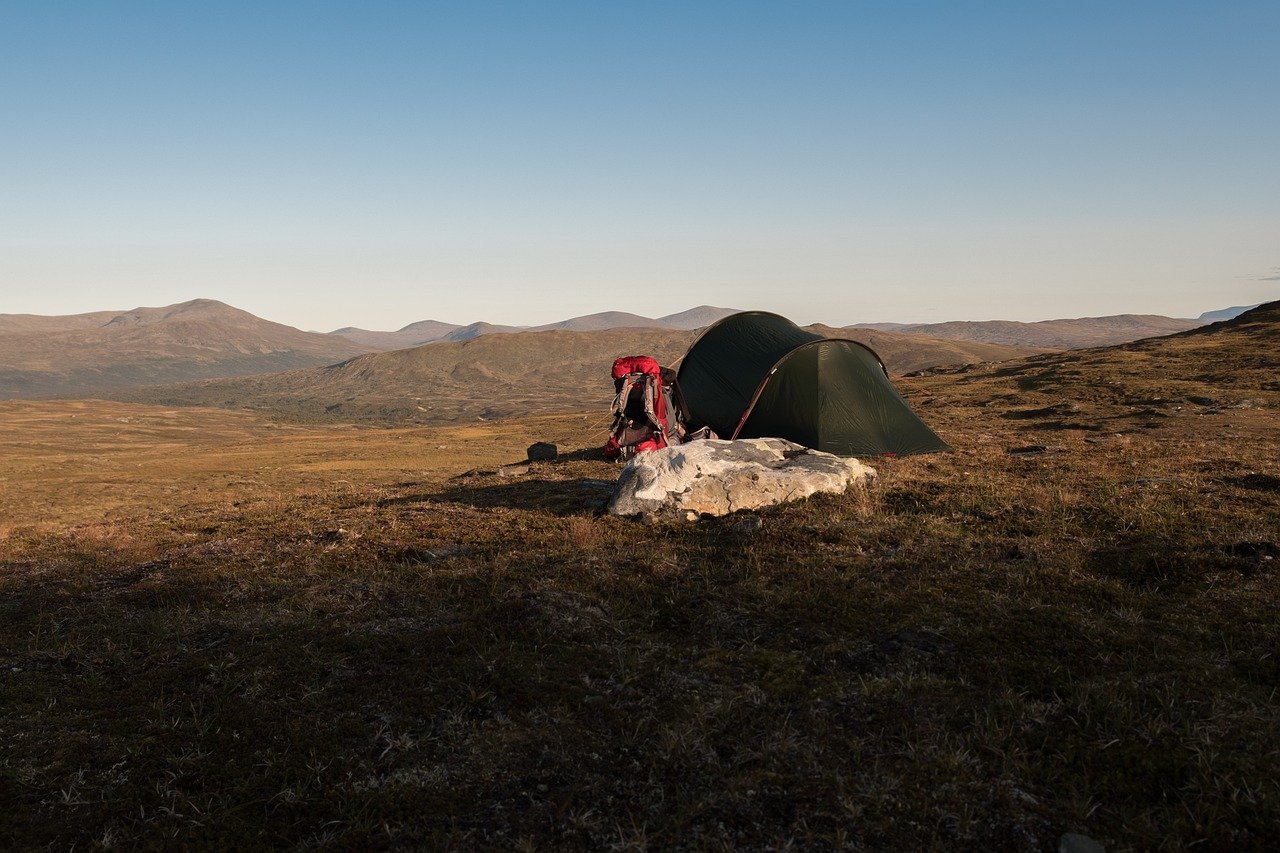
What Are the Gear Storage Options in Backpacking Tents?
When you choose a two-person backpacking tent, think about where you’ll keep your gear. Most tents come with a little extra space called a vestibule. It’s right outside your tent door. You can store muddy boots or wet gear there. It keeps your sleeping spot clean and dry.
Do you want to know about tent vestibules and their sizes? They come in many sizes. Some are just big enough for shoes. Others are so big they can hold backpacks and more. Internal tent organization is key, too. Pockets and loops inside the tent help you keep small items safe and easy to find.
Always try to use space wisely in the tent. Your sleeping area is for rest. Keep it clutter-free by storing stuff in the vestibule or pockets. An ultralight two-person shelter may not have much room. So, you have to balance where you sleep and where your gear goes. That way, you stay comfy and keep your gear safe.
Nobody likes a tight, messy tent. With smart storage, even a cozy tent feels like home. Think about how you pack. Bring just what you need. Then, picking the right tent with the right storage gets much easier. Remember, a neat tent means a happy camper!
Which Tent Features Enhance Backpacking Safety and Convenience?
Want a safe, handy tent for the wild? Reflective materials are key. They make your tent easy to spot at night. Just look for reflective guyline usage when you pick a tent. Tents light up with a small flashlight beam. This is not just cool to see. It’s also a big help if you get lost or leave camp after dark.
Do zippers and weather sealing matter? Yes! They keep you dry and safe inside. Reliable zippers stop those nasty drafts and leaks. Plus, they keep bugs out. Want a tent that lasts through storms? Check for tents with strong zippers and good weather sealing.
Tent poles are the backbone of your shelter. Advanced tent pole structures stand up to heavy winds. They make sure your tent won’t collapse. When you set up camp, trusty poles are what you need. There are different types, so look for ones that are strong but light.
Safety tips for where you camp can be lifesavers. Be wise about wildlife. Know how to store food. This stops animals from visiting. Pitch your tent on safe ground. Watch out for falling rocks or rising water.
Pick a tent with these features. It’ll make your trips safe and hassle-free. Remember, in the wild, your tent is your home. Keep it strong and secure!
How Can I Ensure My Backpacking Tent Lasts for Many Trips?
Your tent is your home outdoors. You want it to last. But how? Good care is key. We need to clean, fix, and store our tents right.
What is the best backpacking tent brand?
The best brand is one that stands up to use. It also offers good repair kits.
Brands aside, let’s talk care. After each trip, clean your tent. Shake out the dirt. Wipe down the fabric with a damp cloth. Make sure it’s dry. Store it loose, not stuffed, in a cool, dry place.
Next, learn how to fix small rips or snaps before they get worse. A simple repair kit is a must. It usually has patches, seam sealer, and spare parts. Fix problems early. This keeps your tent strong trip after trip.
Sometimes, a tent reaches its end. When fixing costs more time and money than it’s worth, it’s time for a new one. Still, with the right practices, even ultralight tents can endure many adventures.
Tackle cleaning with care. Use mild soap and water. Avoid harsh chemicals. They can harm waterproof coatings.
Regular maintenance is also about how you use the tent. Be gentle with zippers. Don’t force poles. Use a footprint—a ground cloth under your tent. It protects against wear. It keeps the bottom clean and dry.
Remember, each fix is a stitch in time. It saves nine, as they say. It saves your tent from the scrap heap. This means more starry nights and sunrise views in your trusty home away from home.
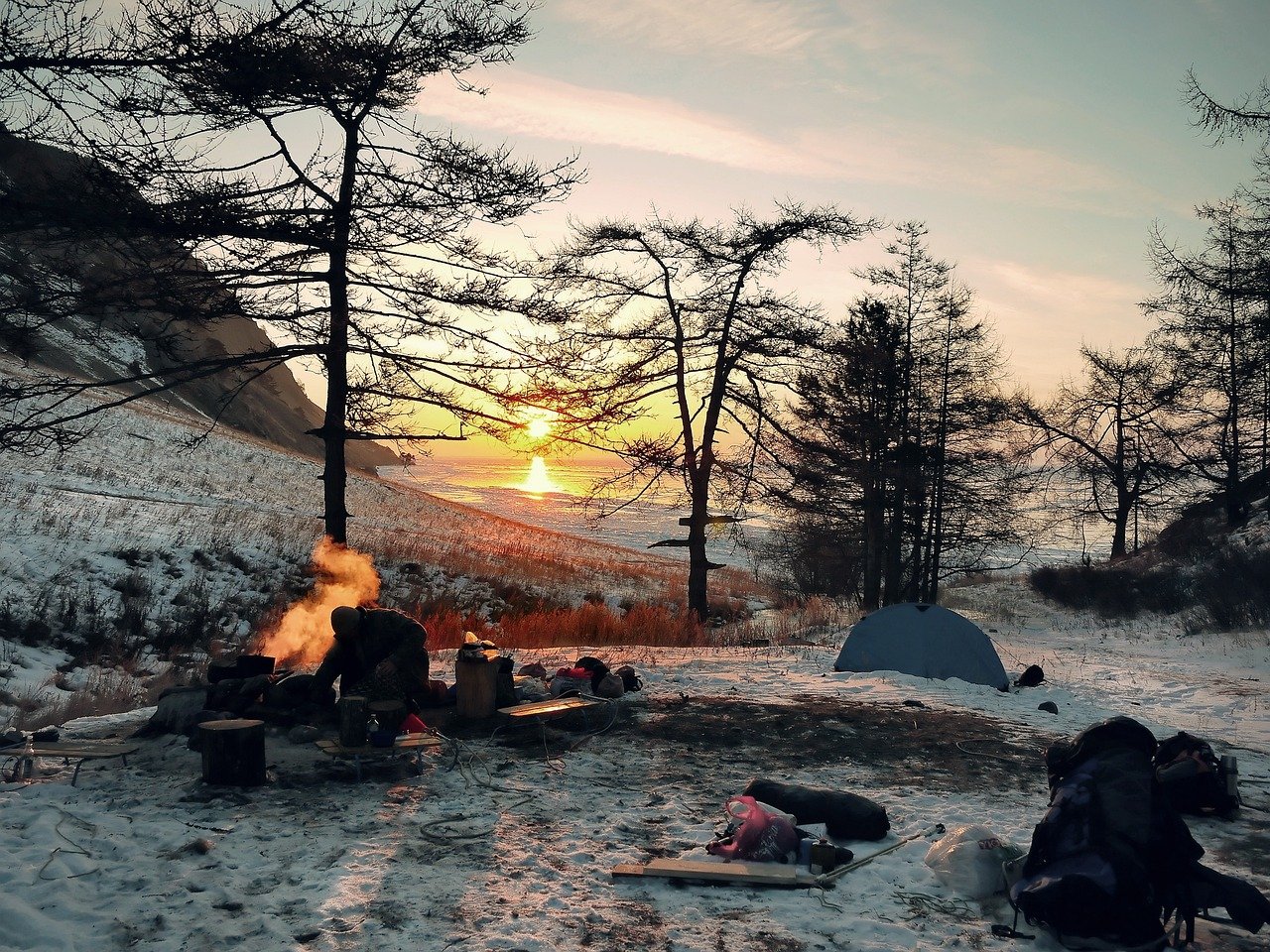
Are There Special Considerations for 4-Person Backpacking Tents?
When you’re choosing a 4-person backpacking tent, think about how you’ll carry it. It’s bigger and heavier than smaller tents. For groups, split the parts to make carrying easier. Look for multiple doors in your tent for less crawling over each other. Privacy partitions help if you’re camping with friends rather than family. Setup can be tricky with more people, so work as a team. This will get your tent up fast and give everyone a sense of how to help.
A big tent means you’ll have more space. But it also means more weight. You might wonder how to fit a large tent in your pack. Here’s a trick: divide the pieces among the group. Each person can carry a bit, like poles or the rainfly. And what about setting up such a big shelter? Teamwork is key. Let each person learn one part of the setup. That way, it’s a snap to get your home in the wild ready.
When you pick out your large tent, look for one with more than one door. This lets people get out at night without stepping on others. Partitions add privacy in close quarters. They make changing clothes or reading without bothering others easier.
Remember, the right 4-person tent makes your trip better. It gives you the room you want while in nature. So, ask yourself about weight, set-up, and comfort. Then, find the perfect tent for your next big adventure!
How Do I Choose Between Different Tent Shapes and Styles?
When picking a tent shape or style, think about where and how you camp. Dome tents stand on their own and resist wind well. Tunnel tents give more space but need stakes to stay up. For rocky or uneven land, geodesic tents, with lots of poles, stay stable. Tent-hammock systems let you sleep above the ground, which is cool in the wild. They keep you off wet soil and away from bugs.
Minimizing your pack weight? Minimalist shelters like tarps or bivy sacks can be light. But they offer less protection from the weather and bugs. If you’re heading into tough weather or remote places, pick an expedition-grade tent. They’re made to take on heavy snow and high winds. On gentle trips, a simple dome tent may be all you need.
Every tent style has its perks. Dome, tunnel, or geodesic tents work best for different trips. Use hybrid tent-hammock systems for flexibility when camping. For those who carry it all on their backs, light shelters work best. The trick is to match the tent to your adventure. Always think about the weight, weather, and the land where you’ll set up camp. Choose wisely, and your tent will be a cozy base for all your outdoor fun!

Factors to Consider for Individual Needs
When looking for the best backpacking tents, you must think about your needs. Ask yourself, “What kind of trips do I have in mind?” Your choice must support these adventures. For single hikers, the best 1-person lightweight tent will serve you well. It’s just enough space for you and your pack. If you hike with friends or a partner, ponder on choosing backpacking tent capacity. A bigger tent offers more room but brings extra weight. Comfort versus carrying ease is important here.
For solo trips, compact tents for solo travel are great. They’re small and easy to set up. They save space in your pack too. If you hike in a pair, a 2-person tent gives more space. Yet, it is still easy to carry. More people mean 3-person lightweight tents might be needed. They give the best mix of space to weight. But, watch out!), they can be heavier to haul around. Always balance space and weight to match your style and needs.
Finishing the section, remember to factor in who you journey with, trip type, and how you like to trek. These points will lead you to the right tent. A light tent makes walking easier during the day. Just enough space gives good rest at night. With these guides, hiking becomes a delight!
Conclusion
In this series, we’ve unpacked what to look for in a sturdy backpacking tent. You now know the balance between tent weight and comfort, how to choose the right size, and fabric that’ll keep you dry. We’ve covered windy and wet weather tents and why cozy space matters. You have the steps to pitch your tent quickly and keep airflow smooth to beat the damp. We also went over smart ways to store your gear inside your tent.
Remember, the right tent makes a safer, handier base camp. Taking care of it means you’ll enjoy many trips. Whether you’re solo or with pals, picking your tent shape and style is key. Now, pack up, head out, and let the stars be your nightlight. Enjoy your next adventure with confidence!
![]()

